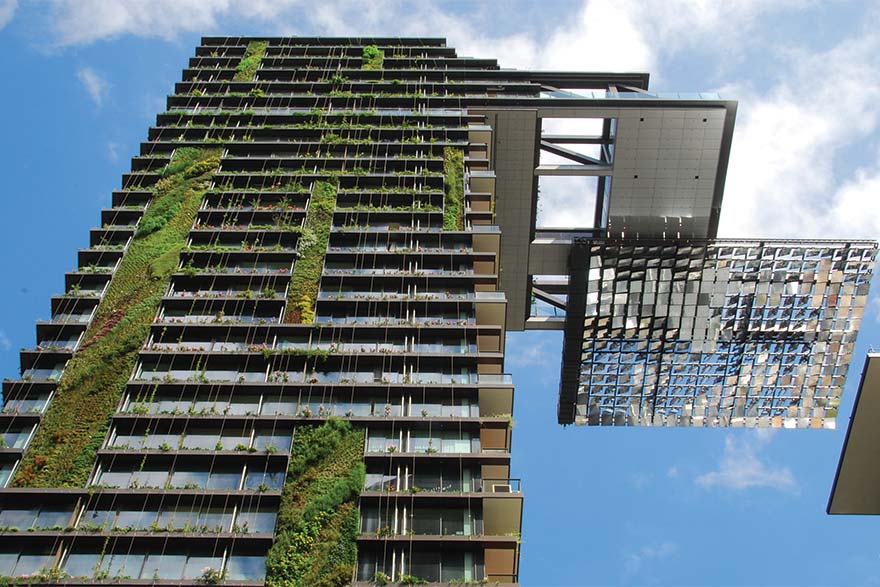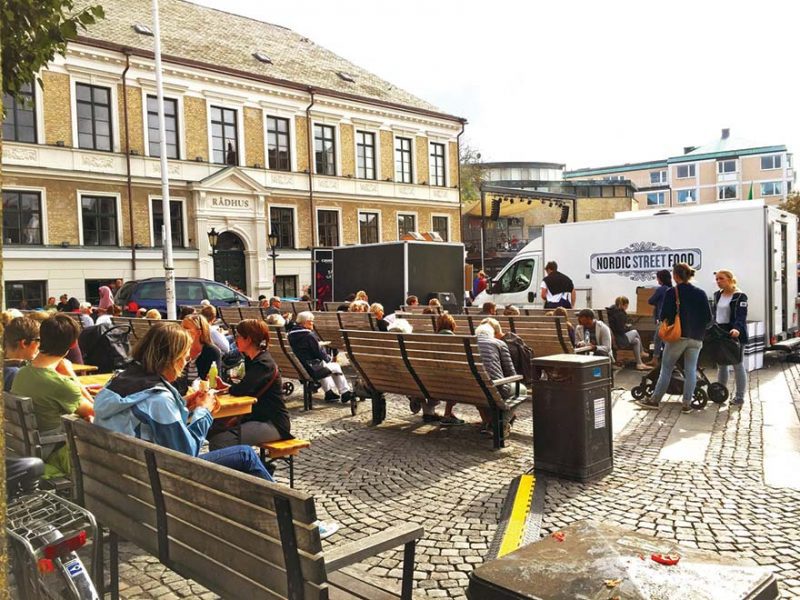Urban mobility is essential when it comes to facilitating the exchange of ideas and innovation. However, during the last century, we went from urban planning aimed at pedestrians and cyclists to a city designed for cars. Is there any way of going back to a sustainable and healthy model?
Think about the city or town where you live. How long does it take you to get to the grocery store on foot? Is your school or work close enough to walk to? What about a public park, a doctor’s office, a daycare, or any other places that you visit on a daily basis? While some cities have already considered what it means to live near all of these necessities, others are revamping their urban planning strategies and designing their neighborhoods to be more pedestrian-friendly.
Partially inspired by the work of Jane Jacobs, who viewed neighborhoods as social connectors, the idea behind “15-minute cities” was developed by Carlos Moreno, a Sorbonne professor who aimed to improve the urban quality of life. With “hyper-proximity” to amenities, jobs, government services, public parks, shopping, and a variety of entertainment only by bike or foot, the concept reconsiders how cities can be better designed to support the basic needs of residents. Within this small radius from their homes, stronger communities will be created that allows residents to feel more invested in the businesses and services in their area.
Mayor Anne Hidalgo’s goal was to encourage the development of more self-sufficient communities within each arrondissement of paris. Dubbed the “ville de quart d’heure”, or the quarter-hour city, the goal is to transform the capital into more efficient neighborhoods to reduce pollution and create socially and economically diverse areas
Moreno models the 15-minute city on his research into the “new relationship between citizens and the rhythm of life in cities”. To achieve a better rhythm, he says, we need to develop multipurpose services — “one building, with many applications through the day. How, for example, we could use a school for other activities, during the weekend. We also want buildings that mix places for living and working at the same time — this reduces the time for commuting.”
Above all, the 15-minute city is one that cuts down unnecessary journeys: “We need to reduce the presence of cars on the streets,” says Moreno. Hidalgo has already banned traffic along parts of the Seine and on some Sundays along the Champs-Élysées.

Other cities, such as Buenos Aires, have introduced free bike-rental schemes for both residents and tourists, while pioneering Amsterdam has a new model, the City Doughnut, which aims to reduce emissions and waste in the drive towards carbon neutrality.
But though the “quarter-hour” framework seems convenient and ecologically sound, it implies many limitations. Lockdown challenged an understanding of cities as places that provide the chance introductions and chains of encounters upon which interesting careers (and personal lives) are constructed. Is it realistic to think of this 15-minute lasso as a permanent, practicable feature? “We don’t want to oblige people to stay in the 15-minute district,” Moreno says. “We don’t want to recreate a village. We want to create a better urban organisation.”
Melbourne has created its own take with a 20-minute neighborhood where everything is within a 20-minute commute. Copenhagen, perhaps a more well-known example, has centralized its sense of urbanism around the reliance on bicycles with a layer of proximity to desirable places
While the “15-minute city” might seem like a utopian impossibility, many policymakers around the globe are already beginning to give their urban cores new life with better city planning, the decentralization of services and goods, and new laws that rezone streets to remove cars and make way for pedestrians and cyclists. One city spearheading this urban strategy is Paris under the leadership of its Mayor, Anne Hidalgo. In fact, it was one of the pillars that drove her political campaign to successful reelection. Her goal is to encourage the development of more self-sufficient communities within each arrondissement of Paris. Dubbed the “ville de quart d’heure”, or the quarter-hour city, the goal is to transform the capital into more efficient neighborhoods to reduce pollution and create socially and economically diverse areas. At her unveiling of this plan, Hidalgo insisted that this revitalization effort would incorporate other strategies as well- including a 5,000 person unarmed police force, a massive undertaking to plant more trees, and heavy fines for uncivil behavior such as littering. More notably, she stated that she wants to continue to pedestrianize the capital by putting a bike lane in every street within the next three years- all while taking away 60,000 parking spaces for cars.

Along with Paris, Melbourne has created its own take with a 20-minute neighborhood where everything is within a 20-minute commute. Copenhagen, perhaps a more well-known example, has centralized its sense of urbanism around the reliance on bicycles with a layer of proximity to desirable places. Even American cities are now taking a closer look at this method, especially with the lessons learned and self-reflection as the COVID-19 pandemic looks ahead to new futures. At a time where people often spent 1-2 hours a day just commuting to work via private transit methods, there’s been an increased focus on returning the streets to the people, finding ways to reduce the heavy reliance on cars and recreate a sense of neighborhood that has diminished with the increase of urban sprawl. Here Technologies has created an interactive map that shows which cities are already tilting the scale towards being more aligned with the 15-minute city goals. While some neighborhoods are walkable now, even more, will likely move in this direction as city planners begin to use this framework to develop their own future city concepts.